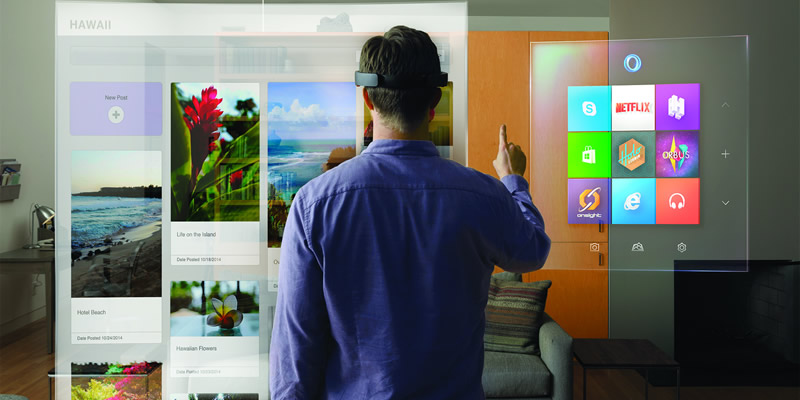For those who are confused about the new augmented reality glasses from Microsoft, we bring you a glimpse of what this technology offers and its implications in the future. Has the era of 'Star Trek' and 'Minority Report' just arrived?
Given the increasing virtual reality fever that we have been experiencing in recent years, Microsoft has committed to make a difference, choosing another technology: augmented reality, with a vision of the future that looks like out of science fiction.
When early 2015 the HoloLens concept was exhibited, many of us were surprised by the innovation curve of this technology, but almost no one sensed its depth. In the annual competition for professionals -where the company reveals its innovations-, possible uses and directions this visor may take where shown.
Microsoft has done an incredible job in HoloLens hardware, giving a considerable technological leap over its predecessors (take the Google Glasses´s case, for example).
The glasses will monitor your movements, observe your eyes and transform what you see by emitting light into your eyes (do not worry, it does not hurt). Because the device tracks your location, you can use hand movements -for the moment, it is a click you make when lifting and lowering the finger while aiming toward the void to interact with 3D images.
In short the HoloLens are not trying to transport you to another world, but brings closer the wonders of a computer directly to where you live. Thus, Microsoft overlaps images and objects in your living room.
Augmented Reality vs. Virtual Reality
Unlike virtual reality, where everything represented is generated by computer, in augmented reality digital content overlaps with the environment surrounding the wearer. That is why, while virtual reality has a clear use in games and multimedia content, augmented reality seems to be more focused on practical and professional use. In fact, Microsoft predicts that the HoloLens can be used both for work and to play.
Another major difference in HoloLens respect any virtual reality viewer is that they are completely independent. Thanks to this, the glasses give comfort and great freedom of movement at a time when "wireless technology" should be taken for granted.
Now, although HoloLens are autonomous, there is a big but. The only time a computer is needed is when we want to share a "hologram" ( Microsoft term that refers to the overlapping of virtual objects on a real image).
In order to incorporate artificial intelligence to Skype conversations, Microsoft is betting on Holoportation, a new project that explores the possibility of "teleporting" virtual avatars, as in the Star Wars saga, and play real-time movements of the person on the other side of the line. But nothing is as simple as it seems. To give the feeling of volume several 3D cameras taking pictures from different corners of the room are needed. Once this three-dimensional figure is captured, the computer compresses it and transmits it to the HoloLens. Voila!
Nowadays, the first units of HoloLens are already being distributed worldwide, at a cost of $ 3,000. They are intended to programmers, who within a year promise to produce holograms that will be display on the lenses users.







